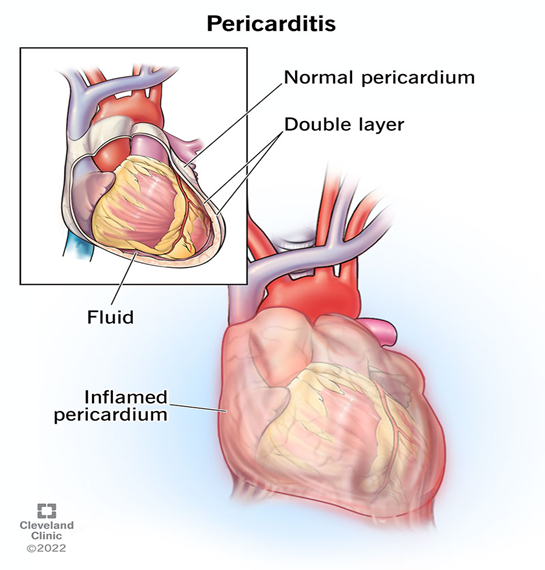A nurse is caring for a client who has diabetic ketoacidosis (DK
Metabolic alkalosis
Metabolic acidosis
Respiratory alkalosis
Respiratory acidosis
The Correct Answer is B
Choice A reason: Metabolic alkalosis is a condition characterized by an elevated pH in body tissues, typically due to an excess of bicarbonate or a loss of hydrogen ions. This condition is not associated with Kussmaul breathing. Kussmaul breathing is a deep and labored breathing pattern often seen in patients with metabolic acidosis, not alkalosis. In metabolic alkalosis, the body does not need to expel excess acid through rapid breathing, so Kussmaul respirations are not observed.
Choice B reason: Metabolic acidosis is a condition where there is an excess of acid in the body due to the accumulation of acid or the loss of bicarbonate. This condition is commonly seen in diabetic ketoacidosis (DKA), where the body produces high levels of ketones, leading to acidosis. Kussmaul breathing is a compensatory mechanism in metabolic acidosis, where the body attempts to reduce the acid level by expelling carbon dioxide through rapid, deep breaths. This type of breathing helps to lower the blood’s acidity by reducing the concentration of carbon dioxide, which is an acid.
Choice C reason: Respiratory alkalosis is a condition where there is a decrease in carbon dioxide levels in the blood due to excessive breathing or hyperventilation. This condition leads to an increase in blood pH, making it more alkaline. Kussmaul breathing is not associated with respiratory alkalosis because it is a response to metabolic acidosis, not a condition where the body is already expelling too much carbon dioxide.
Choice D reason: Respiratory acidosis is a condition where there is an excess of carbon dioxide in the blood due to inadequate respiration. This leads to a decrease in blood pH, making it more acidic. While respiratory acidosis involves an acidic environment, Kussmaul breathing is specifically a response to metabolic acidosis, not respiratory acidosis. In respiratory acidosis, the body would not use Kussmaul respirations as a compensatory mechanism.
Nursing Test Bank
Naxlex Comprehensive Predictor Exams
Related Questions
Correct Answer is C
Explanation
Choice A Reason:
Taking levothyroxine with high-protein foods can interfere with the absorption of the medication. High-protein foods can bind to the medication, reducing its effectiveness. Therefore, it is not recommended to take levothyroxine with high-protein foods.
Choice B Reason:
While it is important to take levothyroxine with a full glass of water to ensure the tablet is swallowed properly and to aid in its absorption, taking it with fruit juice is not recommended. Certain juices, like grapefruit juice, can interfere with the absorption of levothyroxine.
Choice C Reason:
Levothyroxine should be taken on an empty stomach, ideally 30 to 60 minutes before breakfast or at least 3 to 4 hours after the last meal. This timing helps ensure optimal absorption of the medication. Food can significantly reduce the absorption of levothyroxine, making it less effective.
Choice D Reason:
Taking levothyroxine during a meal is not recommended because food can interfere with the absorption of the medication. It is best to take it on an empty stomach to ensure maximum absorption and effectiveness.
Correct Answer is ["C","D"]
Explanation
Choice A Reason
Acetaminophen is often used to manage pain and fever, but it is not the primary treatment for pericarditis. While it can help alleviate discomfort, it does not address the inflammation associated with pericarditis12.
Choice B Reason:
Amiodarone is an antiarrhythmic medication used to treat and prevent various types of serious irregular heartbeats, such as ventricular tachycardia or ventricular fibrillation. It is not typically used for treating pericarditis, as it does not address the inflammation or pain associated with the condition.
Choice C Reason:
Colchicine is recommended as part of the first-line treatment for pericarditis. It helps reduce inflammation and the risk of recurrent pericarditis when used in conjunction with NSAIDs5. Colchicine is effective in managing symptoms and preventing recurrences.
Choice D Reason:
Indomethacin is a nonsteroidal anti-inflammatory drug (NSAID) that is effective in reducing inflammation and pain associated with pericarditis. NSAIDs are commonly prescribed for pericarditis to help manage symptoms and reduce inflammation. Indomethacin, along with other NSAIDs like ibuprofen, is often part of the first-line treatment for this condition.
Choice E Reason:
Nitroglycerine is primarily used to treat angina (chest pain) and heart failure by dilating blood vessels and reducing the heart’s workload. It is not typically used for treating pericarditis, as it does not address the inflammation or pain associated with the condition.

Whether you are a student looking to ace your exams or a practicing nurse seeking to enhance your expertise , our nursing education contents will empower you with the confidence and competence to make a difference in the lives of patients and become a respected leader in the healthcare field.
Visit Naxlex, invest in your future and unlock endless possibilities with our unparalleled nursing education contents today
Report Wrong Answer on the Current Question
Do you disagree with the answer? If yes, what is your expected answer? Explain.
Kindly be descriptive with the issue you are facing.
